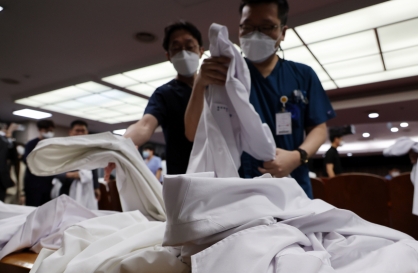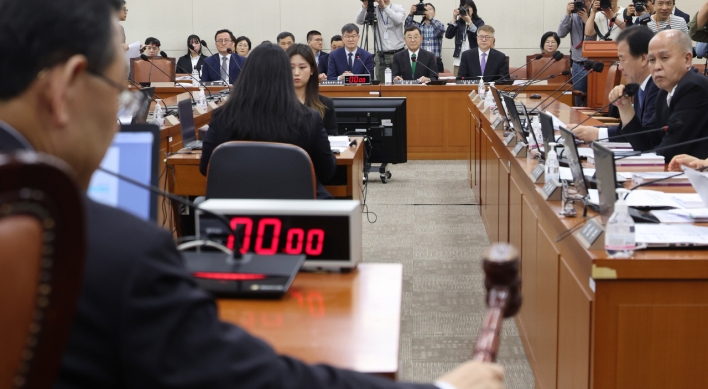[Herald Interview] Weak consumption, property risk could delay Korea’s recovery: ADB economist
Korean economy forecast to grow by 2.2% in 2024, 2.3% in 2025
By Im Eun-byelPublished : April 11, 2024 - 17:57

While recent figures indicate the Korean economy is on the path of recovery, weak household consumption and a fragile property market could remain challenges for the country, an economist from the Asian Development Bank projected.
In its Asian Development Outlook report released Thursday, the international organization based in Manila forecast Korea's gross domestic product to grow by 2.2 percent in 2024 and 2.3 percent in 2025, signaling a turn from the 1.4 percent increase observed last year.
While it projected the exports of semiconductors, vessels and automobiles would support the recovery, it further suggested the economic growth could be "uneven."
“The recovery is uneven because while exports (of semiconductors and vessels) have rebounded, weak consumption is being a drag on growth currently,” said Madhavi Pundit, senior economist at the ADB, during an online interview with The Korea Herald held Wednesday.
“Household consumption is sluggish and is expected to remain weak in at least the first half of 2024 amid the high inflation, high-interest rate environment,” Pundit said.
Private spending in Korea grew by 1.8 percent last year, less than half of the 4.1 percent increase seen in the year before.
The consumption slump results from snowballing household loans. The total balance of household loans taken out by banks stood at 1,098.6 trillion won ($803 billion) as of March.
As the outstanding loans are mostly on floating rates, the borrowers have to pay back a larger amount when the interest rates are rising, which especially pressures low-income groups, she said.
“The main issue and concern for policymakers today with (household debts) is that (they are) putting a real burden on households. In an economy where consumption is already low, they are finding it harder to have spending power and that is dampening the growth and recovery," she said.
Pundit stressed, though, the debt balance is a “policy challenge for the government,” it does not present an imminent risk to the financial system as the delinquency rates are low.
Pundit further projected that consumption will pick up in the second half of the year, as retail sales, a measure of private spending, grew by an average of 1.4 percent in the first two months of 2024.
"The main concern is the high cost of living which affects consumer sentiment and spending. An improvement in consumption will boost GDP growth," she explained.
The pickup in spending will come when borrowing costs drop with the BOK lowering the base rate. But a rate cut, as mentioned by the BOK governor on multiple occasions, is likely to come only after price growth declines further.
On a hopeful note, inflation is likely to further ease off in Korea with a decline in international fuel prices, according to the ADB. While prices grew by 3.6 percent last year, the development bank suggested the figure will drop to 2.5 percent in 2024 and 2 percent in 2025, meeting the policy target goal.
As of this year, consumer prices rose 2.8 percent in January, followed by a 3.1 percent surge in both February and March.
Apart from the prices, the housing market could be a weak link in the Korean economy. In the report, the multilateral funding agency described the Korean property market as “fragile.”
“Some real indicators -- unsold residential properties are still quite high. Forward-looking indicators, such as approved building permits or construction starts, have been going down,” Pundit said.
This shows a mismatch in demand and supply of units, hindering the investment growth, she explained.
“There are weaknesses and distortions. Several risks could affect the (property) sector, including high borrowing costs, tight credit conditions, risks from project financing-related losses and so on,” she said.




![[Grace Kao] Hybe vs. Ador: Inspiration, imitation and plagiarism](http://res.heraldm.com/phpwas/restmb_idxmake.php?idx=644&simg=/content/image/2024/04/28/20240428050220_0.jpg&u=)

![[Herald Interview] Mom’s Touch seeks to replicate success in Japan](http://res.heraldm.com/phpwas/restmb_idxmake.php?idx=644&simg=/content/image/2024/04/29/20240429050568_0.jpg&u=)


![[News Focus] Lee tells Yoon that he has governed without political dialogue](http://res.heraldm.com/phpwas/restmb_idxmake.php?idx=644&simg=/content/image/2024/04/29/20240429050696_0.jpg&u=20240429210658)









![[Today’s K-pop] Seventeen sets sales record with best-of album](http://res.heraldm.com/phpwas/restmb_idxmake.php?idx=642&simg=/content/image/2024/04/30/20240430050818_0.jpg&u=)